

A book by Herb Stevenson, Volume 1. Learn more on Amazon.
Thoughts II:
The Next Step: A Calling

Volume 2 of 3. Learn more on Amazon.
Thoughts III:
Creating The Container

Volume 3 of 3. Learn more on Amazon.
To Lead
Read the article about training with Herb Stevenson in ALN Magazine.
See the article...
Unleashing Potential
With ZING
We are well aware that time is more than money. Very quickly it can become an under- utilized and misspent resource. Understanding this perpetual problem we have sought various technologies that can increase the efficiency and effectiveness of team development, emergent change processes and transformational change.
As deemed appropriate by the client and our consultants, we will bring a whole-system technology into the work. It is called ZING.
What is ZING?1
ZING is a facilitated meeting and learning environment that provides a shared conceptual space where all participants are able to simultaneously view and contribute ideas as they are created. Groups are quickly able to function as teams, efficiently generating new knowledge, understanding and plans of action. After a session, the information can be instantly emailed to all participants for further collaboration and decision-making.
What ZING does
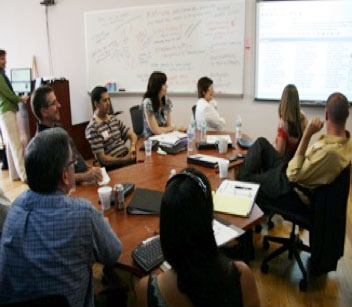 ZING lends itself to brainstorming problems and solutions particularly well because it can gather and display large amounts of information. Participants find ZING easy to learn and are able to use it with just a few minutes training.
ZING lends itself to brainstorming problems and solutions particularly well because it can gather and display large amounts of information. Participants find ZING easy to learn and are able to use it with just a few minutes training.
Users of ZING report that it allows a more systemic view of issues, increases the amount of information available to current power holders, and empowers the silent majority. It helps open up discussion, allowing more aspects of an issue to be canvassed. Participants work together; use the computer to provide meeting structure; collect, review and evaluate ideas; interpret those ideas in relation to current knowledge; and make decisions.
ZING allows all participants to "Talk at once". Each person has their own window, or 'Play space' where they type their ideas. These ideas are then submitted to the 'Team space' window. These windows are projected onto a large screen. There is a common focus and all activity is visible, nothing is hidden from view.
How ZING is used
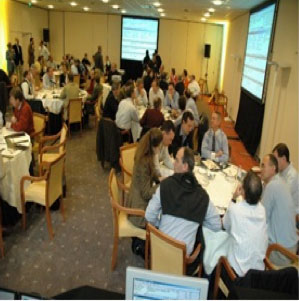 ZING is being used to help organizations and communities re-invent themselves for success in the new global economic climate. It is being used successfully in many areas including:
ZING is being used to help organizations and communities re-invent themselves for success in the new global economic climate. It is being used successfully in many areas including:
- Visioning/Dream Summits Business planning
- Workshops, seminars and retreats Creativity and innovation Business process re-engineering Crisis management
- Market research and focus groups Advertising and public relations campaigns Change management
- Project management
- Human resource development activities
- including leadership,
- teamwork and team building
- Futures and scenario planning
- Community development and stakeholder engagement
- University and school education and training Marketing and product development
The Benefits of ZING
ZING systems help groups become top performing teams, make sense out of complex or rapidly changing situations and win agreement for immediate collective action. The benefits of ZING team meetings are:
- Five times faster than conventional meetings.
- Anyone can facilitate sessions.
- People generate hundreds of useful ideas an hour.
- Everyone gets really involved and has an enjoyable experience. Disorganized groups become top-performing teams.
- New reliable knowledge is created.
- People reach radical but similar conclusions despite their differences. People become committed more readily to take action.
How ZING Works
The computer interface is simple and uses either wireless keyboards connected to a main machine, or an intranet/internet system. While there is great benefit to having participants meet in person, successful sessions can be held virtually as well.
Participants discuss their ideas, then type them into the system, via wireless keyboards, where they are displayed for everyone to see.
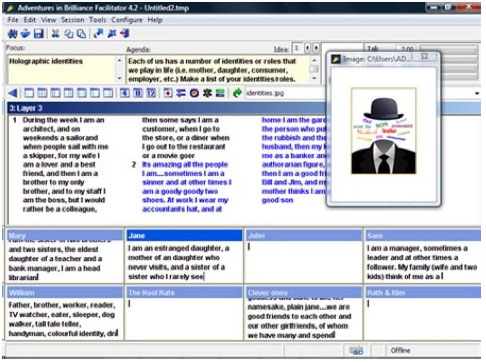
Next all ideas are read aloud and the group finds common ideas or themes.

Once the themes are correlated, the team can begin a deeper level of understanding surrounding not only the themes/critical success factors, but can begin to develop an understanding of the obstacles that have prevented solutions to date, as well as to begin defining the critical success actions.
Team Development
ZING helps groups become teams by helping people to work as a team rather than individuals within a group. They all see the same thing so they have no secrets from each other. They see ideas as they are being created so they are more prepared to borrow from and morph ideas more easily and work in parallel at all times to avoid conflict. They have a common focus so leadership is always present and use thinking processes which avoid dissatisfying tasks such as classifying and rating.
The ZING system does for people at meetings what leading process consultant Edgar Schein describes makes for effective teamwork. What are the conditions for effective groups (teams)? The team members have a shared common focus. Everyone is able to contribute and is "listened to" equally. Feelings are freely expressed. All aspects of issues are canvassed. No single person is relied upon to make decisions. People are extremely candid. People become very creative and open to new ideas. The activity seems effortless.

As a result the team moves through the stages of group development much quicker. Because ZING creates a group container through the computer interface, there is less need for forming and storming within the group. Ideas are quickly expressed from each wireless keyboard onto a team space (a single large, shared screen). There is no need to negotiate norms. The computer interface creates the rules of engagement such that the primary focus is not on group dynamics, but on interfacing with the meeting purpose and content. The magic of ideas appearing on the team space (single large screen) refocuses the participants into creating an exciting and shared, compelling picture.
Individual engagement tends to exponentially grow while group development moves into sound learning and creative solutions. People, often, report experiences such as “being in the groove”, “switched on” or having “aha’s”.
In the world of the group or team, these “peak” personal experience have their equivalents and it can be contagious, especially when the members begin to achieve their peak experiences simultaneously.
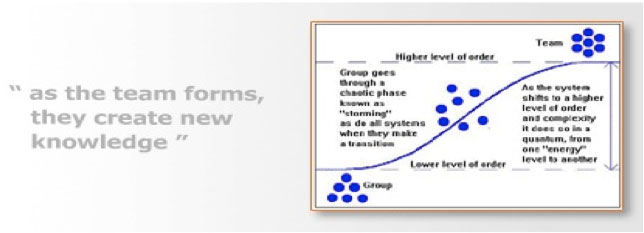
Professor Mihaly Csikszentmihalyi at the University of Chicago, a researcher for what creates states of "optimal experience", states that when people report feelings of concentration and deep enjoyment, it was revealed what makes experience genuinely satisfying is a state of consciousness called flow - a state of concentration so completely focused that it amounts to absolute absorption in an activity. ZING creates the container for flow to surface.
Transform Organizations
ZING is widely used to help organizations engage with their entire community to work out how to create a better future and then make it happen.
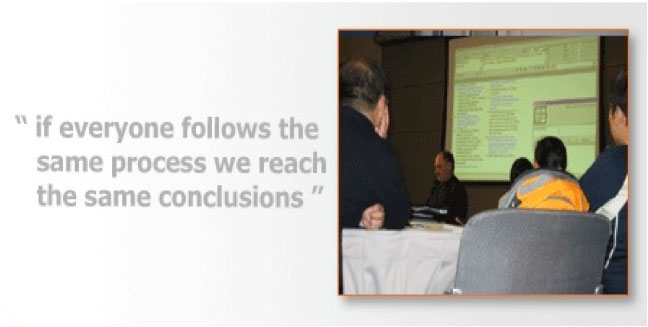
How does ZING help to rejuvenate organizations and assist in surviving transformations? We begin by involving everyone. We help people hear different opinions and integrate them into a common concept. We help the organization collectively focus on a future that incorporates the needs and desires of competing interests. We help organizations quickly create the huge number of projects and programs necessary to survive the huge attrition rate of innovation – one in sixty new projects succeed. We provide the tools that help people do it themselves and take responsibility for the new activities within a common corporate or educational goal. So we truly become learning organizations.
In the educational arena we help whole educational systems create a better learning system for the citizens of the future. Our learners, both teachers and students, acquire the skills of “knowledge workers”, including the ability to create new knowledge, the leadership skills to facilitate the work of others, the thinking skills to solve any complex problem or create new opportunities, the sense of responsibility that ensures new knowledge is applied wisely and in a timely way, the flexibility to navigate across many ethnic, social and professional cultures and the ability to use a multiplicity of emerging complex technologies. The best results have been achieved where the entire school teaching community is engaged in the pedagogical change process. This is similar to the experience in the business world where whole-of- organization cultural change programs have become necessary to learn faster and remain competitive. So we truly create learning communities.
Case Study
See ZING in action with the American International School of Rotterdam case study.
Footnotes
1 Zing Technologies makes electronic meetings systems and team creativity tools to help people and organizations quickly and easily adapt to accelerating change. The company was established in 1998.

